
- Pet Passports
- Airline Pet Policies
- Ferry Cruise Ship Policies
- Other Forms
- Pet Carriers
- Pet Carrier Accessories
- Pet Crate Accessories
- Pet Microchips
- Microchip Scanners
- Bulk Discounts Microchips Scanners
- New Arrivals
- Customer Gallery
- Security/Privacy
- Shipping/Returns

Popular Brands
- Pet Passport Countries N-O
Pet Passport Nicaragua
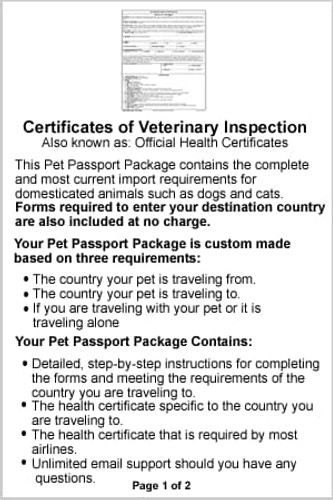
Nicaragua Pet Passport - Page 1

Nicaragua Pet Passport - Page 2

Add to Wishlist
Please create a new Wishlist
- Description
This package contains information and detailed step-by-step instructions and required forms to import your dog or cat to Nicaragua from any country. If your pet is not traveling to Nicaragua, then you can select the country your pet is traveling to by clicking here .
Carefully following these instructions will make clearing customs in Nicaragua easier and quicker. The instructions will also help to avoid having your pet denied entry, put into quarantine or returned to your country of origin.

The Pet Passport Store has been a trusted and reliable source of information and products for traveling pet owners for over 14 years. The information we provide in our passports is always the most current and accurate available. We have done the research for you.
What You Get:
- Detailed instructions to import your dog or cat to Nicaragua from any country
- Required Vaccinations
- Veterinary Health Certificate Instructions
- Inoculation Record Instructions
- Carrier and Crate Requirements
- Tips on Flying a Pet Internationally
- FREE unlimited email support both for you and your veterinarian, should either of you have any questions.
Also included at no additional cost are the necessary forms for your pet to enter Nicaragua:
- Bi-Lingual Veterinary Health Certificate for Nicaragua (Spanish/English)
- Airline Health Certificate
- Layover Considerations & Requirements for Airline Pet Travel
- Inoculation Record - keep your pet's vaccinations in one place for easy customs clearance
- Pet Passport Folder - (Free with First Class Mail Delivery Options above) Click Here to View
Delivery Options (select above):
Email - faster delivery - multiple copies can be printed if you are transporting more than one pet. First Class Mail - we print instructions and forms and mail to you. There is a cost for printing and postage with this option.
Additional Information:
It is our objective to prepare the traveling pet owner for all entry requirements that may arise as a result of traveling by air, sea or ground. Enforcement may not be consistent in every country or on every airline, and having proper documentation will better ensure that no problems will arise during your travels.
If you purchase our instructions and forms prior to 30 days before you travel, please check back with us to make sure there have been no changes in the rules or forms required to take your pet to Nicaragua. All updated instructions and forms are provided by email free of charge.
We cannot offer refunds on pet passport packages unless there is a problem with the information or forms provided.
You may also need :
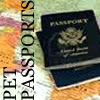
Have a crate for your pet already? Click here to update your pet crate to IATA standards .
Have a carrier for your pet already? Click here for pet pads and accessories .
FAST SHIPPING
EASY RETURNS
GREAT SUPPORT
Related Products
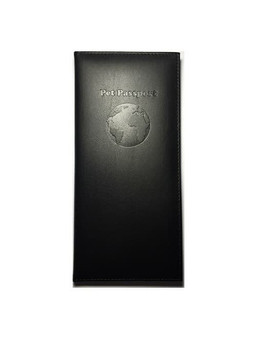
Leather Pet Document Holder
Leather Pet Passport Holder You won't find this beautiful leather pet passport holder anywhere else. Designed and custom-made exclusively for the Pet Travel Store. Clearance Price $19.95</

Pet Passport & Medical Record
MEDICAL RECORD FOLDER - Custom Made for your Pet Free Ground Shipping! THE #1 PRODUCT FOR KEEPING YOUR PET'S VITAL INFORMATION ALL IN

Petmate Airline Cargo Crate Medium
Petmate Airline or Auto Cargo Crate - Medium

Pet Carrier Sherpa Original Deluxe
Sherpa Pet Carrier - for Dogs and Cats - Original Deluxe Medium and Large Size Priced at cost!

Update Your Pet Crate Kit
Do you already have a crate for your pet? Need accessories to make it IATA compliant? Want products that will keep your pet safe, dry and comfortable? Pick only what you need to bring your...
Leather Pet Passport Holder You won't find this beautiful leather pet passport holder anywhere else…
MEDICAL RECORD FOLDER - Custom Made for your Pet Free Ground Shipping! THE #1 PRODUCT FOR KEEPING …
Sherpa Pet Carrier - for Dogs and Cats - Original Deluxe Medium and Large Size Priced at cost! …
Do you already have a crate for your pet? Need accessories to make it IATA compliant? Want pro…
- Nicaragua Tourism
- Nicaragua Hotels
- Nicaragua Bed and Breakfast
- Nicaragua Vacation Rentals
- Flights to Nicaragua
- Nicaragua Restaurants
- Things to Do in Nicaragua
- Nicaragua Travel Forum
- Nicaragua Photos
- All Nicaragua Hotels
- Nicaragua Hotel Deals
- Last Minute Hotels in Nicaragua
- Things to Do
- Restaurants
- Vacation Rentals
- Travel Stories
- Rental Cars
- Add a Place
- Travel Forum
- Travelers' Choice
- Help Center
Traveling to Nicaragua with pets? - Nicaragua Forum
- Central America
- Nicaragua
Traveling to Nicaragua with pets?
- United States Forums
- Europe Forums
- Canada Forums
- Asia Forums
- Central America Forums
- Africa Forums
- Caribbean Forums
- Mexico Forums
- South Pacific Forums
- South America Forums
- Middle East Forums
- Honeymoons and Romance
- Business Travel
- Train Travel
- Traveling With Disabilities
- Tripadvisor Support
- Solo Travel
- Bargain Travel
- Timeshares / Vacation Rentals
- Central America forums
- Nicaragua forum

Can pets be brought into Nicaragua from the U.S.?

I do think that will be a problem as long as the dog is up to date with its vaccines.
Regarding traveling with a dog - There are stray dogs running around everywhere in Nicaragua. Good chance of your dog getting in a fight, contracting something, or running away. Another thing to keep in mind is that pet kidnapping is not uncommon in Central America - especially when it is a Gringo who is obviously cares for the animal. Nicaragua is also host to many parasites that are uncommon in the US that could make your dog sick. The stresses of travel and drastic change in climate/temperature will weaken your dogs immune system making it more susceptible to parasites and pathogenic bacteria/viruses
Veterinary medicine in the area is either non-existent or primate at best
Do your dog a big favor and leave it at home
Thanks Sean - that sure makes Nicaragua a place where I don't think I want to go. I really appreciate the information.
It's a great place to visit - just leave your dog at home with a friend.

One of the best trips I've ever taken was the highlands of Ecuador. I would not recommending taking pets on that trip either. Why restrict yourself?

Pets can be brought to Nicaragua but there is a strict protocol for entering and leaving the country.
We just brought my daughter's service dog here 3.5 months ago and had NO issues.
You must get a vet certificate no more than 2 weeks before you travel. Your rabies vax must be less than 1 year (reason being is because they are used to the 1 year vaxes here vs the 3 year that we have available to us in the US. The vet also must administer a flea & Tick treatment (like Frontline or the equivalent) and an anti-parasitic pill also)
You take your rabies certificate and vet cert. to the USDA and have them sign off on the vet cert (and pay them $35) and you're set!
When I came through immigration there were no issues .... they checked all our dogs documents, stamped it and charged us $10.
When leaving here your pet must be examined by a USDA certified vet also. (similar but almost easier process) ... and that's it. (within 2 weeks of travel)
There are several USDA approved vets here in Nicaragua and I have found several EXCELLENT vets here for our dog. Frontline and Advantix are considerably cheaper here in Nic too btw!
We've been here 3.5 months and my dog LOVES it here.
That being said ... if you are going on vacation anywhere internationally ... I do NOT recommend taking your pet with you as your put your animal at risk to be exposed to undo stress and illnesses plus access issues you might encounter.
Best wishes!
This topic has been closed to new posts due to inactivity.
- Yellow Fever Vaccine yesterday
- Safety Apr 19, 2024
- Little Corn warning - robbery Apr 19, 2024
- Nicaragua in May - 7 days: Is it to much for Granada and su Apr 17, 2024
- Flights from Corn Island to Managa Apr 13, 2024
- La Costena baggage policy - Dive gear Apr 12, 2024
- Urgent! Nicaragua visa required for green card holder? Apr 10, 2024
- IQOS in Nicaragua Apr 10, 2024
- Nicaragua Entry Form Apr 10, 2024
- body surfing Apr 10, 2024
- Masaya closed? Apr 03, 2024
- Nicaragua to Costa Rica and back (please help!) Apr 03, 2024
- Taxi fares in Managua Apr 02, 2024
- Panga schedule to and from LCI Apr 02, 2024
- From Liberia to Nicaragua 10 replies
- All-inclusive vacation Resorts in Nicaragua 7 replies
- How safe is it to travel in Nicaragua now (2011) 14 replies
- Must See and Do in Nicaragua? 2 replies
- Taxi from Granada to San Jorge 3 replies
- Is it safe to drive through Nicaragua? 7 replies
- Tranportation from Liberia CR to Granada or Managua 5 replies
- Weather in October 4 replies
- One Day in Puerto Corinto - What to do? 11 replies
- La Costena Airline 3 replies
You are using an outdated browser. Upgrade your browser today or install Google Chrome Frame to better experience this site.
Nicaragua Traveler View
Travel health notices, vaccines and medicines, non-vaccine-preventable diseases, stay healthy and safe.
- Packing List
After Your Trip
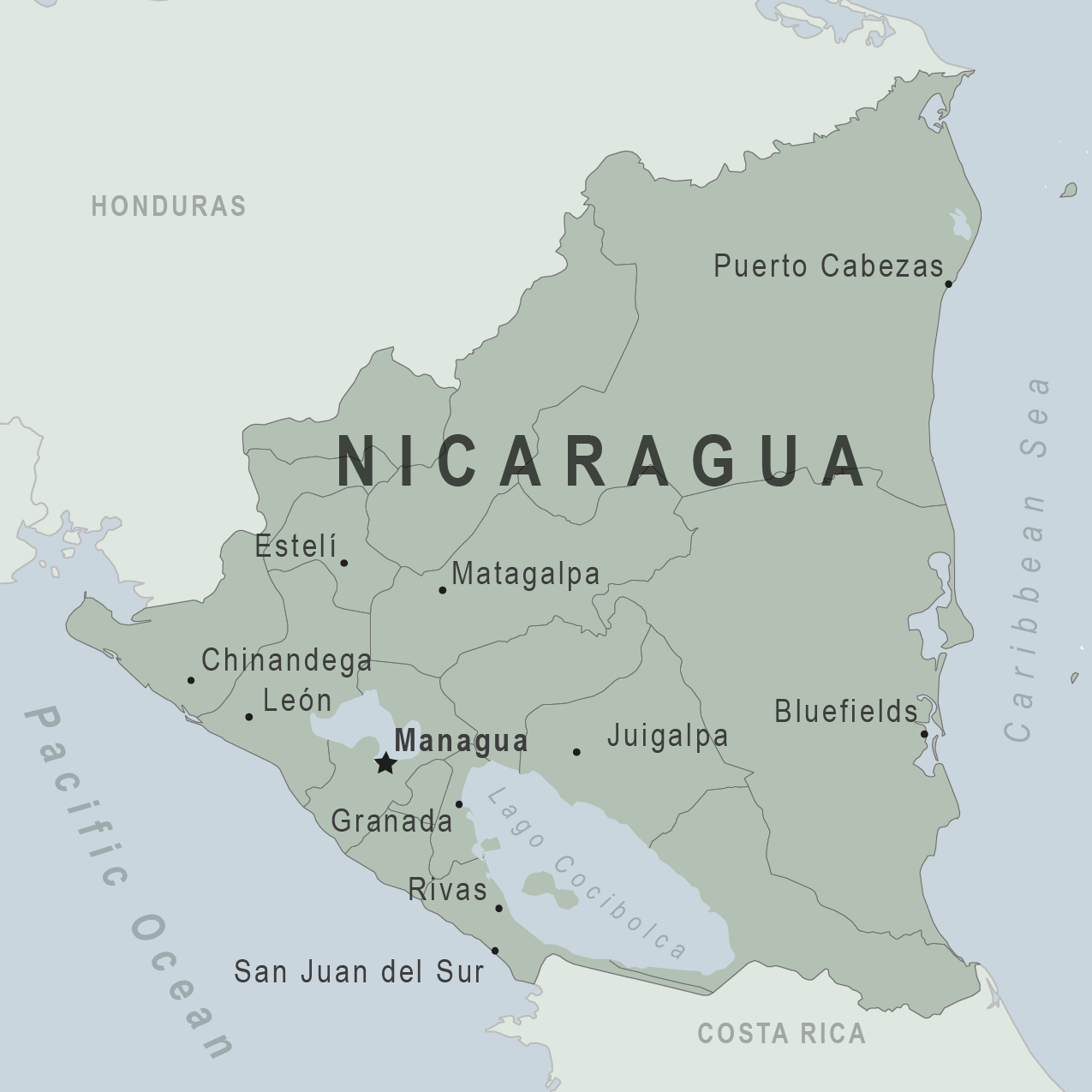
Be aware of current health issues in Nicaragua. Learn how to protect yourself.
Level 1 Practice Usual Precautions
- Dengue in the Americas April 18, 2024 Dengue is a risk in many parts of Central and South America, Mexico, and the Caribbean. Some countries are reporting increased numbers of cases of the disease. Travelers to the Americas can protect themselves by preventing mosquito bites. Destination List: Argentina, Brazil, Colombia, Costa Rica, Ecuador, including the Galápagos Islands, French Guiana (France), Guadeloupe, Guatemala, Martinique (France), Mexico, Nicaragua, Panama, Paraguay, Peru, Turks and Caicos Islands (U.K.), Uruguay
⇧ Top
Check the vaccines and medicines list and visit your doctor at least a month before your trip to get vaccines or medicines you may need. If you or your doctor need help finding a location that provides certain vaccines or medicines, visit the Find a Clinic page.
Routine vaccines
Recommendations.
Make sure you are up-to-date on all routine vaccines before every trip. Some of these vaccines include
- Chickenpox (Varicella)
- Diphtheria-Tetanus-Pertussis
- Flu (influenza)
- Measles-Mumps-Rubella (MMR)
Immunization schedules
All eligible travelers should be up to date with their COVID-19 vaccines. Please see Your COVID-19 Vaccination for more information.
COVID-19 vaccine
Hepatitis A
Recommended for unvaccinated travelers one year old or older going to Nicaragua.
Infants 6 to 11 months old should also be vaccinated against Hepatitis A. The dose does not count toward the routine 2-dose series.
Travelers allergic to a vaccine component or who are younger than 6 months should receive a single dose of immune globulin, which provides effective protection for up to 2 months depending on dosage given.
Unvaccinated travelers who are over 40 years old, immunocompromised, or have chronic medical conditions planning to depart to a risk area in less than 2 weeks should get the initial dose of vaccine and at the same appointment receive immune globulin.
Hepatitis A - CDC Yellow Book
Dosing info - Hep A
Hepatitis B
Recommended for unvaccinated travelers younger than 60 years old traveling to Nicaragua. Unvaccinated travelers 60 years and older may get vaccinated before traveling to Nicaragua.
Hepatitis B - CDC Yellow Book
Dosing info - Hep B
CDC recommends that travelers going to certain areas of Nicaragua take prescription medicine to prevent malaria. Depending on the medicine you take, you will need to start taking this medicine multiple days before your trip, as well as during and after your trip. Talk to your doctor about which malaria medication you should take.
Find country-specific information about malaria.
Malaria - CDC Yellow Book
Considerations when choosing a drug for malaria prophylaxis (CDC Yellow Book)
Malaria information for Nicaragua.
Cases of measles are on the rise worldwide. Travelers are at risk of measles if they have not been fully vaccinated at least two weeks prior to departure, or have not had measles in the past, and travel internationally to areas where measles is spreading.
All international travelers should be fully vaccinated against measles with the measles-mumps-rubella (MMR) vaccine, including an early dose for infants 6–11 months, according to CDC’s measles vaccination recommendations for international travel .
Measles (Rubeola) - CDC Yellow Book
Rabid dogs are commonly found in Nicaragua. If you are bitten or scratched by a dog or other mammal while in Nicaragua, there may be limited or no rabies treatment available.
Consider rabies vaccination before your trip if your activities mean you will be around dogs or wildlife.
Travelers more likely to encounter rabid animals include
- Campers, adventure travelers, or cave explorers (spelunkers)
- Veterinarians, animal handlers, field biologists, or laboratory workers handling animal specimens
- Visitors to rural areas
Since children are more likely to be bitten or scratched by a dog or other animals, consider rabies vaccination for children traveling to Nicaragua.
Rabies - CDC Yellow Book
Recommended for most travelers, especially those staying with friends or relatives or visiting smaller cities or rural areas.
Typhoid - CDC Yellow Book
Dosing info - Typhoid
Yellow Fever
Required for travelers ≥1 year old arriving from countries with risk for YF virus transmission. 1
Yellow Fever - CDC Yellow Book
Avoid contaminated water
Leptospirosis
How most people get sick (most common modes of transmission)
- Touching urine or other body fluids from an animal infected with leptospirosis
- Swimming or wading in urine-contaminated fresh water, or contact with urine-contaminated mud
- Drinking water or eating food contaminated with animal urine
- Avoid contaminated water and soil
Clinical Guidance
Avoid bug bites, chagas disease (american trypanosomiasis).
- Accidentally rub feces (poop) of the triatomine bug into the bug bite, other breaks in the skin, your eyes, or mouth
- From pregnant woman to her baby, contaminated blood products (transfusions), or contaminated food or drink.
- Avoid Bug Bites
Chagas disease
- Mosquito bite
Leishmaniasis
- Sand fly bite
- An infected pregnant woman can spread it to her unborn baby
Airborne & droplet
- Breathing in air or accidentally eating food contaminated with the urine, droppings, or saliva of infected rodents
- Bite from an infected rodent
- Less commonly, being around someone sick with hantavirus (only occurs with Andes virus)
- Avoid rodents and areas where they live
- Avoid sick people
Tuberculosis (TB)
- Breathe in TB bacteria that is in the air from an infected and contagious person coughing, speaking, or singing.
Learn actions you can take to stay healthy and safe on your trip. Vaccines cannot protect you from many diseases in Nicaragua, so your behaviors are important.
Eat and drink safely
Food and water standards around the world vary based on the destination. Standards may also differ within a country and risk may change depending on activity type (e.g., hiking versus business trip). You can learn more about safe food and drink choices when traveling by accessing the resources below.
- Choose Safe Food and Drinks When Traveling
- Water Treatment Options When Hiking, Camping or Traveling
- Global Water, Sanitation and Hygiene | Healthy Water
- Avoid Contaminated Water During Travel
You can also visit the Department of State Country Information Pages for additional information about food and water safety.
Prevent bug bites
Bugs (like mosquitoes, ticks, and fleas) can spread a number of diseases in Nicaragua. Many of these diseases cannot be prevented with a vaccine or medicine. You can reduce your risk by taking steps to prevent bug bites.
What can I do to prevent bug bites?
- Cover exposed skin by wearing long-sleeved shirts, long pants, and hats.
- Use an appropriate insect repellent (see below).
- Use permethrin-treated clothing and gear (such as boots, pants, socks, and tents). Do not use permethrin directly on skin.
- Stay and sleep in air-conditioned or screened rooms.
- Use a bed net if the area where you are sleeping is exposed to the outdoors.
What type of insect repellent should I use?
- FOR PROTECTION AGAINST TICKS AND MOSQUITOES: Use a repellent that contains 20% or more DEET for protection that lasts up to several hours.
- Picaridin (also known as KBR 3023, Bayrepel, and icaridin)
- Oil of lemon eucalyptus (OLE) or para-menthane-diol (PMD)
- 2-undecanone
- Always use insect repellent as directed.
What should I do if I am bitten by bugs?
- Avoid scratching bug bites, and apply hydrocortisone cream or calamine lotion to reduce the itching.
- Check your entire body for ticks after outdoor activity. Be sure to remove ticks properly.
What can I do to avoid bed bugs?
Although bed bugs do not carry disease, they are an annoyance. See our information page about avoiding bug bites for some easy tips to avoid them. For more information on bed bugs, see Bed Bugs .
For more detailed information on avoiding bug bites, see Avoid Bug Bites .
Stay safe outdoors
If your travel plans in Nicaragua include outdoor activities, take these steps to stay safe and healthy during your trip.
- Stay alert to changing weather conditions and adjust your plans if conditions become unsafe.
- Prepare for activities by wearing the right clothes and packing protective items, such as bug spray, sunscreen, and a basic first aid kit.
- Consider learning basic first aid and CPR before travel. Bring a travel health kit with items appropriate for your activities.
- If you are outside for many hours in heat, eat salty snacks and drink water to stay hydrated and replace salt lost through sweating.
- Protect yourself from UV radiation : use sunscreen with an SPF of at least 15, wear protective clothing, and seek shade during the hottest time of day (10 a.m.–4 p.m.).
- Be especially careful during summer months and at high elevation. Because sunlight reflects off snow, sand, and water, sun exposure may be increased during activities like skiing, swimming, and sailing.
- Very cold temperatures can be dangerous. Dress in layers and cover heads, hands, and feet properly if you are visiting a cold location.
Stay safe around water
- Swim only in designated swimming areas. Obey lifeguards and warning flags on beaches.
- Practice safe boating—follow all boating safety laws, do not drink alcohol if driving a boat, and always wear a life jacket.
- Do not dive into shallow water.
- Do not swim in freshwater in developing areas or where sanitation is poor.
- Avoid swallowing water when swimming. Untreated water can carry germs that make you sick.
- To prevent infections, wear shoes on beaches where there may be animal waste.
Leptospirosis, a bacterial infection that can be spread in fresh water, is found in Nicaragua. Avoid swimming in fresh, unchlorinated water, such as lakes, ponds, or rivers.
Keep away from animals
Most animals avoid people, but they may attack if they feel threatened, are protecting their young or territory, or if they are injured or ill. Animal bites and scratches can lead to serious diseases such as rabies.
Follow these tips to protect yourself:
- Do not touch or feed any animals you do not know.
- Do not allow animals to lick open wounds, and do not get animal saliva in your eyes or mouth.
- Avoid rodents and their urine and feces.
- Traveling pets should be supervised closely and not allowed to come in contact with local animals.
- If you wake in a room with a bat, seek medical care immediately. Bat bites may be hard to see.
All animals can pose a threat, but be extra careful around dogs, bats, monkeys, sea animals such as jellyfish, and snakes. If you are bitten or scratched by an animal, immediately:
- Wash the wound with soap and clean water.
- Go to a doctor right away.
- Tell your doctor about your injury when you get back to the United States.
Consider buying medical evacuation insurance. Rabies is a deadly disease that must be treated quickly, and treatment may not be available in some countries.
Reduce your exposure to germs
Follow these tips to avoid getting sick or spreading illness to others while traveling:
- Wash your hands often, especially before eating.
- If soap and water aren’t available, clean hands with hand sanitizer (containing at least 60% alcohol).
- Don’t touch your eyes, nose, or mouth. If you need to touch your face, make sure your hands are clean.
- Cover your mouth and nose with a tissue or your sleeve (not your hands) when coughing or sneezing.
- Try to avoid contact with people who are sick.
- If you are sick, stay home or in your hotel room, unless you need medical care.
Avoid sharing body fluids
Diseases can be spread through body fluids, such as saliva, blood, vomit, and semen.
Protect yourself:
- Use latex condoms correctly.
- Do not inject drugs.
- Limit alcohol consumption. People take more risks when intoxicated.
- Do not share needles or any devices that can break the skin. That includes needles for tattoos, piercings, and acupuncture.
- If you receive medical or dental care, make sure the equipment is disinfected or sanitized.
Know how to get medical care while traveling
Plan for how you will get health care during your trip, should the need arise:
- Carry a list of local doctors and hospitals at your destination.
- Review your health insurance plan to determine what medical services it would cover during your trip. Consider purchasing travel health and medical evacuation insurance.
- Carry a card that identifies, in the local language, your blood type, chronic conditions or serious allergies, and the generic names of any medications you take.
- Some prescription drugs may be illegal in other countries. Call Nicaragua’s embassy to verify that all of your prescription(s) are legal to bring with you.
- Bring all the medicines (including over-the-counter medicines) you think you might need during your trip, including extra in case of travel delays. Ask your doctor to help you get prescriptions filled early if you need to.
Many foreign hospitals and clinics are accredited by the Joint Commission International. A list of accredited facilities is available at their website ( www.jointcommissioninternational.org ).
In some countries, medicine (prescription and over-the-counter) may be substandard or counterfeit. Bring the medicines you will need from the United States to avoid having to buy them at your destination.
Malaria is a risk in some parts of Nicaragua. If you are going to a risk area, fill your malaria prescription before you leave, and take enough with you for the entire length of your trip. Follow your doctor’s instructions for taking the pills; some need to be started before you leave.
Select safe transportation
Motor vehicle crashes are the #1 killer of healthy US citizens in foreign countries.
In many places cars, buses, large trucks, rickshaws, bikes, people on foot, and even animals share the same lanes of traffic, increasing the risk for crashes.
Be smart when you are traveling on foot.
- Use sidewalks and marked crosswalks.
- Pay attention to the traffic around you, especially in crowded areas.
- Remember, people on foot do not always have the right of way in other countries.
Riding/Driving
Choose a safe vehicle.
- Choose official taxis or public transportation, such as trains and buses.
- Ride only in cars that have seatbelts.
- Avoid overcrowded, overloaded, top-heavy buses and minivans.
- Avoid riding on motorcycles or motorbikes, especially motorbike taxis. (Many crashes are caused by inexperienced motorbike drivers.)
- Choose newer vehicles—they may have more safety features, such as airbags, and be more reliable.
- Choose larger vehicles, which may provide more protection in crashes.
Think about the driver.
- Do not drive after drinking alcohol or ride with someone who has been drinking.
- Consider hiring a licensed, trained driver familiar with the area.
- Arrange payment before departing.
Follow basic safety tips.
- Wear a seatbelt at all times.
- Sit in the back seat of cars and taxis.
- When on motorbikes or bicycles, always wear a helmet. (Bring a helmet from home, if needed.)
- Avoid driving at night; street lighting in certain parts of Nicaragua may be poor.
- Do not use a cell phone or text while driving (illegal in many countries).
- Travel during daylight hours only, especially in rural areas.
- If you choose to drive a vehicle in Nicaragua, learn the local traffic laws and have the proper paperwork.
- Get any driving permits and insurance you may need. Get an International Driving Permit (IDP). Carry the IDP and a US-issued driver's license at all times.
- Check with your auto insurance policy's international coverage, and get more coverage if needed. Make sure you have liability insurance.
- Avoid using local, unscheduled aircraft.
- If possible, fly on larger planes (more than 30 seats); larger airplanes are more likely to have regular safety inspections.
- Try to schedule flights during daylight hours and in good weather.
Medical Evacuation Insurance
If you are seriously injured, emergency care may not be available or may not meet US standards. Trauma care centers are uncommon outside urban areas. Having medical evacuation insurance can be helpful for these reasons.
Helpful Resources
Road Safety Overseas (Information from the US Department of State): Includes tips on driving in other countries, International Driving Permits, auto insurance, and other resources.
The Association for International Road Travel has country-specific Road Travel Reports available for most countries for a minimal fee.
For information traffic safety and road conditions in Nicaragua, see Travel and Transportation on US Department of State's country-specific information for Nicaragua .
Maintain personal security
Use the same common sense traveling overseas that you would at home, and always stay alert and aware of your surroundings.
Before you leave
- Research your destination(s), including local laws, customs, and culture.
- Monitor travel advisories and alerts and read travel tips from the US Department of State.
- Enroll in the Smart Traveler Enrollment Program (STEP) .
- Leave a copy of your itinerary, contact information, credit cards, and passport with someone at home.
- Pack as light as possible, and leave at home any item you could not replace.
While at your destination(s)
- Carry contact information for the nearest US embassy or consulate .
- Carry a photocopy of your passport and entry stamp; leave the actual passport securely in your hotel.
- Follow all local laws and social customs.
- Do not wear expensive clothing or jewelry.
- Always keep hotel doors locked, and store valuables in secure areas.
- If possible, choose hotel rooms between the 2nd and 6th floors.
Healthy Travel Packing List
Use the Healthy Travel Packing List for Nicaragua for a list of health-related items to consider packing for your trip. Talk to your doctor about which items are most important for you.
Why does CDC recommend packing these health-related items?
It’s best to be prepared to prevent and treat common illnesses and injuries. Some supplies and medicines may be difficult to find at your destination, may have different names, or may have different ingredients than what you normally use.
If you are not feeling well after your trip, you may need to see a doctor. If you need help finding a travel medicine specialist, see Find a Clinic . Be sure to tell your doctor about your travel, including where you went and what you did on your trip. Also tell your doctor if you were bitten or scratched by an animal while traveling.
If your doctor prescribed antimalarial medicine for your trip, keep taking the rest of your pills after you return home. If you stop taking your medicine too soon, you could still get sick.
Malaria is always a serious disease and may be a deadly illness. If you become ill with a fever either while traveling in a malaria-risk area or after you return home (for up to 1 year), you should seek immediate medical attention and should tell the doctor about your travel history.
For more information on what to do if you are sick after your trip, see Getting Sick after Travel .
Map Disclaimer - The boundaries and names shown and the designations used on maps do not imply the expression of any opinion whatsoever on the part of the Centers for Disease Control and Prevention concerning the legal status of any country, territory, city or area or of its authorities, or concerning the delimitation of its frontiers or boundaries. Approximate border lines for which there may not yet be full agreement are generally marked.
Other Destinations
If you need help finding travel information:
Message & data rates may apply. CDC Privacy Policy
File Formats Help:
- Adobe PDF file
- Microsoft PowerPoint file
- Microsoft Word file
- Microsoft Excel file
- Audio/Video file
- Apple Quicktime file
- RealPlayer file
- Zip Archive file
Exit Notification / Disclaimer Policy
- The Centers for Disease Control and Prevention (CDC) cannot attest to the accuracy of a non-federal website.
- Linking to a non-federal website does not constitute an endorsement by CDC or any of its employees of the sponsors or the information and products presented on the website.
- You will be subject to the destination website's privacy policy when you follow the link.
- CDC is not responsible for Section 508 compliance (accessibility) on other federal or private website.
We’re sorry, this site is currently experiencing technical difficulties. Please try again in a few moments. Exception: request blocked
Nomadic Matt's Travel Site
Travel Better, Cheaper, Longer
Nicaragua Travel Guide
Last Updated: September 1, 2023
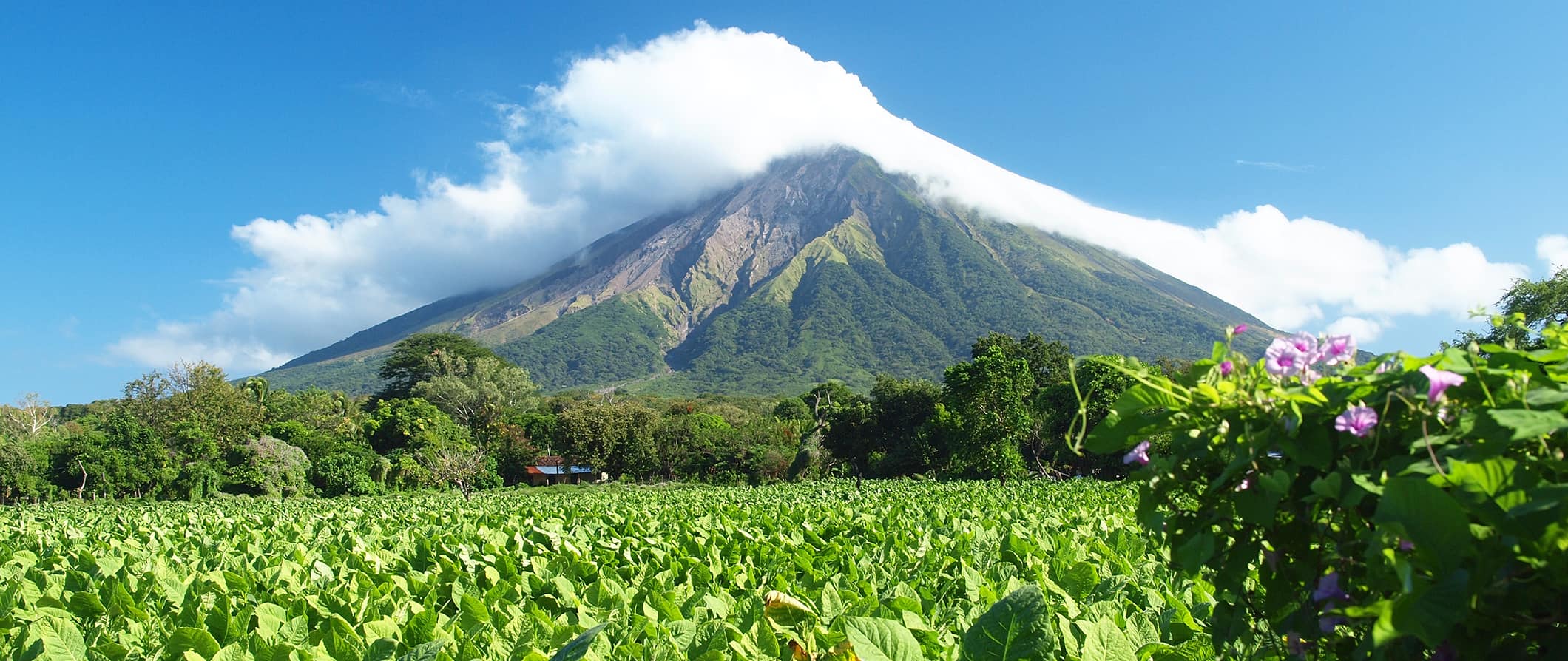
Known as the “Land of Lakes and Volcanoes,” Nicaragua is the largest country in Central America. Home to Lake Nicaragua (Central America’s largest lake), beautiful islands, expansive volcanic terrain, mangrove swamps, ethereal cloud forests, and tropical rainforests, Nicaragua is a stunning destination with tons of things to see and do — no matter your interests.
In fact, I loved my visit to Nicaragua so much I ended up extending my visit!
While Granada, León, and San Juan del Sur tend to pull in the crowds, if you leave the main southern cities and get a little off the tourist trail, you can discover even more varied landscapes, friendly locals, and little explored towns and national parks.
This travel guide to Nicaragua shows you how to visit on a budget, save money, and make the most of your trip.
Table of Contents
- Things to See and Do
- Typical Costs
- Suggested Budget
- Money-Saving Tips
- Where to Stay
- How to Get Around
- How to Stay Safe
- Best Places to Book Your Trip
- Related Blogs on Nicaragua
Top 5 Things to See and Do in Nicaragua
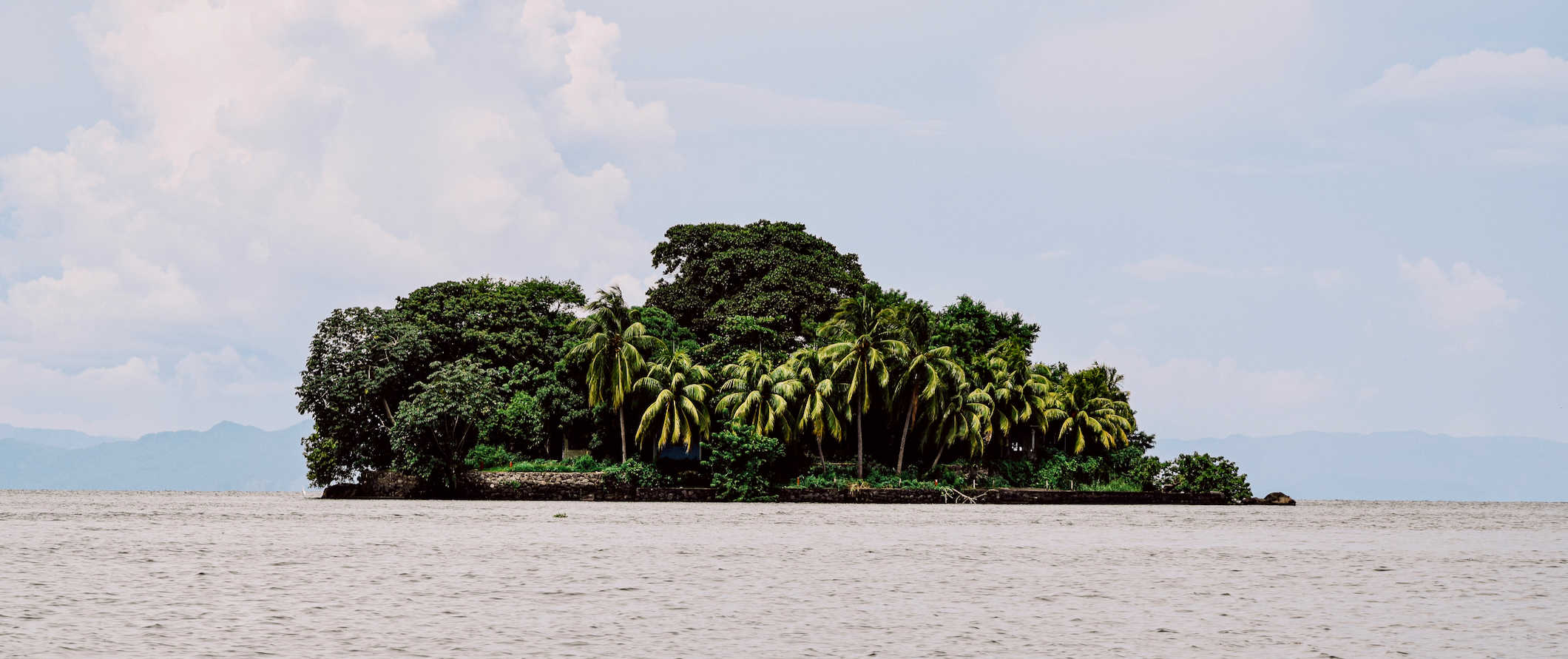
1. Visit Little Corn Island
This archipelago off the Caribbean coast is one of the best places to relax in the country. It boasts diving with hammerhead sharks and underwater caves, fresh seafood, and plenty of hammock downtime on deserted beaches (invest in a good hammock if you’re serious about your R&R). Don’t miss Otto’s Beach.
2. Relax in San Juan del Sur
This picturesque surfer paradise is fringed with prehistoric volcanic hills and was the first destination to put Nicaragua on the map. Backpackers flock here in droves to surf and party under the stars. It’s a must-visit destination in the country!
3. Admire colonial Granada
Nicaragua’s oldest city is revered as the colonial jewel of Central America. Many of the pastel-painted buildings have been meticulously restored. Bask in Granada’s historic grandeur as you weave through the cobblestone streets, visit local art galleries, and sip on a coffee in a plaza.
4. Tour León
From world-class museums, Central America’s largest cathedral, and other beautiful monuments to a lively party scene fueled by the ample student population, León is one of my favorite places in the country. Sample the best roadside quesillo and see the local artists who give the city its eccentric flavor.

5. Explore Ometepe Island
Spend your days hiking, kayaking, or cycling around the island, spotting howler monkeys and archeological ruins in the process. Two of the two volcanoes here (Concepción and Maderas) offer strenuous 8-10-hour hikes. Guides are mandatory and cost 530 NIO.
Other Things to See and Do in Nicaragua
1. hike miraflores.
Miraflores national park was the highlight of my entire trip. Located in Estelí in northern Nicaragua, this is a stunning cloud forest with rivers and waterfalls. You can take day-hikes or multiday treks to the park (the multiday trips enable you to stay with local host families in small communities) and there are also programs to help you learn to farm. The one-day trek that I did ran from 7am-4pm and cost 550 NIO which included two meals and a mandatory guide. An extra bonus that I loved is that all the money goes back into supporting the community and farmers.
2. Explore Rio San Juan
This river is a wonderful stopover for nature enthusiasts looking to go kayaking, fishing, and wildlife watching. Despite the surge in eco-tourism in the region, accommodation options are still no-frills and very low-key, with Wi-Fi and phone coverage being scarce. Most tours leave from San Carlos, which is located at the mouth of the river on Lake Nicaragua.
3. Hike a volcano
Nicaragua has 19 volcanos (9 of which are active). The two peaks on Ometepe –– Concepcion and Maderas –– are the two most popular day hikes in the country. Concepción, towering at 1,600 meters (5,249 feet) is a baking hot hike, so bring lots of sunblock and water. Maderas is easier but muddier, with a lake at the summit. Cerro Negro (near León) offers a comfortable sandy route from top to bottom and is also well-known for “volcano surfing.” Masaya Volcano is the most active volcano in Nicaragua and you can actually see the lava bubbling there (visits are limited to 10 minutes due to the fumes). For people wanting a challenge, try San Cristobal, Nicaragua’s highest volcano. If you’re hunting for scenic Insta-worthy views, hike to Telica (also within easy reach from León) for a spectacular sunset (you can actually camp at the top).
4. Relax at Lake Apoyo
Laguna de Apoyo is a breathtaking body of water that sits upon the Apoyo volcano crater near Granada. This 200-meter-deep lake is the perfect spot for swimming, kayaking, fishing, and sailing. Hostels offer day trips from Granada for around 300 NIO, which include a return shuttle and include use of another hostel’s facilities, kayaks, and tubes on the lagoon. You can also visit independently and stay overnight if you want a longer visit.
5. Tour a coffee plantation
Coffee is Nicaragua’s primary export and Jinotega, the misty and mountainous northern region, produces over 80% of the country’s output. You can organize a coffee tour in any of the eco-lodges/hostels dotted around the region. I particularly liked Eco Albergue La Fundadora. Even though I don’t drink coffee, it’s a fascinating and important industry in the country (and region) and worth learning about.
6. Relax at the Pearl Cays
The remote string of crescent-shaped playas that make up the Pearl Cays (pronounced “Pearl Keys”) offer some of the best Caribbean beaches in Nicaragua. Unfortunately, due to climate change, this stunning collection of white islands is steadily shrinking. Located near the Corn Islands, there are currently only 10 left from the original 18. Accommodation on the island is super exclusive and very pricey. However, day trips by shared speedboat can be easily arranged to make visits affordable. Private boats start from around 8,800 NIO and fit up to 10 people. Come here to snorkel, swim, and lounge away the day.
7. Visit the Bosawas Biosphere Reserve
Bosawas is the second-largest rainforest in the Western Hemisphere and is home to jaguars, tapirs, spider monkeys, harpy eagles, and more. A huge chunk of the country’s bird population — 600 out of 790 species — are located here, making it the prime spot for wildlife and bird watching. Multi-day trips, where you can truly immerse yourself in the wilderness, hike cloud forests, swim in waterfalls, and meet Mayangna and Miskito indigenous communities start at around 12,000 NIO per person.
8. Explore the Solentiname Archipelago
Isolated on the southwest tip of Lago de Nicaragua, the Solentiname Archipelago is a cluster of 36 islands revered for their pristine collections of primitive art, birdlife, and laid-back lifestyle. It’s best to base yourself in Mancarrón and organize day trips to other neighboring islands throughout your stay. It’s roughly a four-hour drive from Managua to San Carlos and then and then a two-hour boat ride to the dock in Mancarrón. There are no ATMs to be found on the islands so bring plenty of cash.
9. Shop at the Masaya Markets
Stock up on rum, coffee, hammocks, and ceramics at the Masaya Markets in Masaya National Park near Managua. Barter your way through the markets and soak up the colorful atmosphere. While there is a lot of tourist junk here, there are still plenty of artisanal handmade crafts as well. On Thursdays, a weekly ‘Night of Revelry’ features traditional dancing, local food, and music. The market is just thirty minutes from Managua.
10. Visit the stone carving hermit
Near Estelí in the north you can find Alberto the hermit. He’s been living here for almost 40 years, carving stone figures and sculptures in the jungle. He’s eccentric, kind, and incredibly knowledgeable about the flora and fauna in the region. Stop by to see his carvings and learn about his life in the jungle. Here’s a video of my visit .
11. Check out the Isletas de Granada
Southeast of the city of Granada in Lake Nicaragua, you can find the Isletas de Granada (Grenada Islets). There are around 365 of these volcanic islands, some of which are inhabited. A few have hotels on them or you can take a one-hour boat ride around them to admire their pristine beauty (it costs around 1,400 NIO for a boat that can take 8 people).
12. See Somoto Canyon
Dating back to the Miocene epoch (23-25 million years ago), Somoto Canyon is a relatively unexplored part of Nicaragua. Located near the border with Honduras, it was discovered by Czech and Nicaraguan scientists in 2004 and, since then, its spectacular walls and clear water have become a popular tourist destination. Activities here include hiking, boating, and scaling the canyon walls. The narrowest part of the canyon can only be reached by swimming or by tubing. Somoto Canyon Tours offers a variety of tours lasting from 3-6 hours with prices starting at 880 NIO.
13. Do a homestay/Learn Spanish
If you have a bit more time to spend in Nicaragua, there are lots of opportunities to volunteer, learn Spanish, and farm by taking part in a homestay (Estelí, Ometepe, and León are popular destinations for this). Hostels and tourist offices in any of the big cities can help you arrange it.
Nicaragua Travel Costs
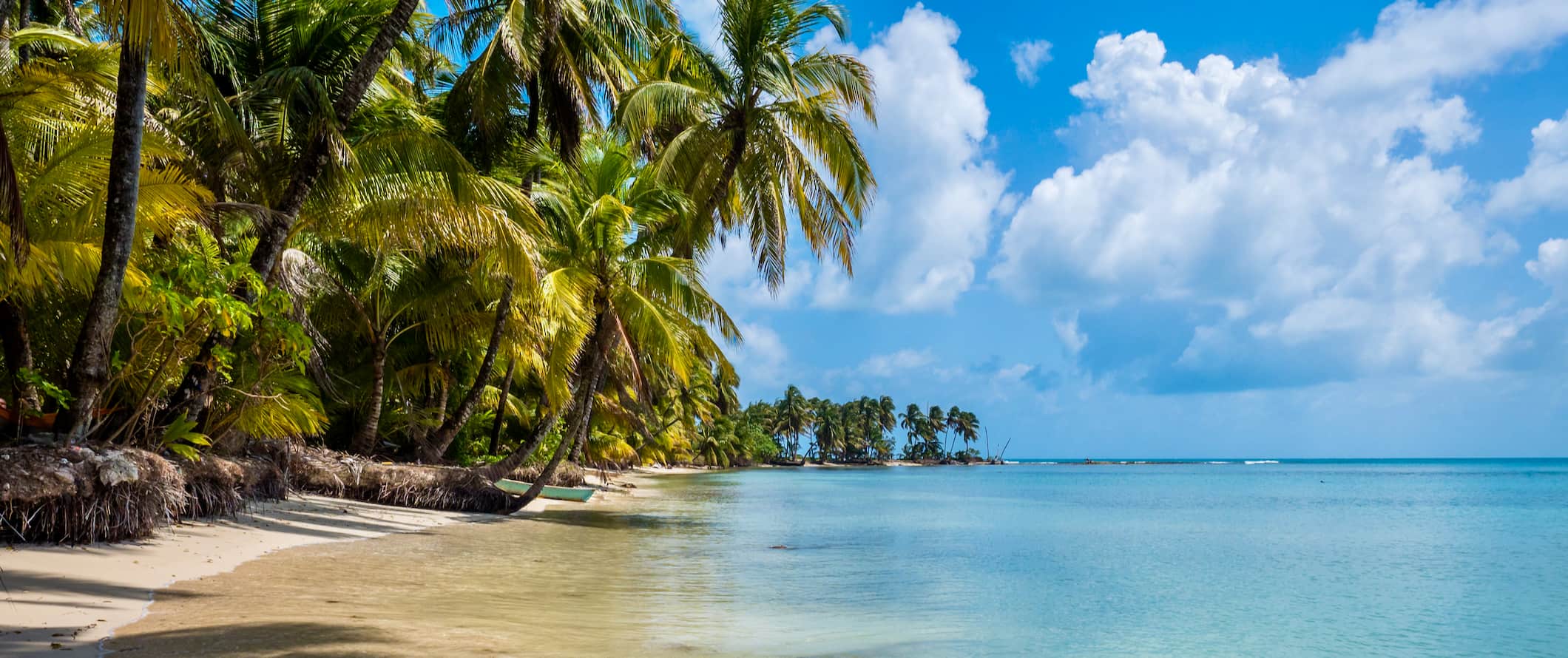
Accommodation – Small 6-8-bed dorms generally cost around 250-350 NIO per night, with private rooms costing between 700-1,700 NIO. Free Wi-Fi and free breakfast are common and many hostels also have a swimming pool.
For a budget two-star hotel, expect to pay between 1,000-2,600 NIO for a double room including breakfast. Expect basic amenities such as Wi-Fi, A/C, a TV, and sometimes a swimming pool.
Airbnb is available on Nicaragua’s Pacific coast as well as in Grenada and Managua (there are no rentals on the Atlantic side). You can score a great beachfront property from 2,800-4,200 NIO depending on group size and house style. For a private room, expect to pay at least 880 NIO per night.
Food – Beans, rice, and meat are the backbone of most meals in Nicaragua. Grilled chicken, pork, and beef are common options (especially for street food). Gallo pinto (fried rice and beans) is the go-to breakfast and dinner meal, with an egg often being added for the breakfast option. Be sure to try the popular quesillo , a tortilla wrapped around white cheese smothered cream, and nacatamales , a tamale made from maize dough stuffed with pork and potato.
A typical lunch, eaten in a comedor (local eatery serving tradition cuisine), or street stall costs between 100-175 NIO. Nicaraguans are more accustomed to dining out for lunch so travelers can expect to see fewer evening options available in non-touristy spots.
On the coast, seafood is the main staple so expect a lot of grilled fish. On the Caribbean side, the cuisine is heavily influenced by Caribbean culture as well.
A meal at a restaurant serving local cuisine costs around 345-520 NIO for a three-course meal with a drink.
The touristy towns and on the coast have more international cuisine options. Expect to pay 800-1,200 NIO for a three-course meal in a mid-range restaurant. A large pizza costs around 270-350 NIO. For fast food (think McDonald’s), expect to pay around 210 NIO for a meal.
A domestic beer or latte/cappuccino costs around 30-90 NIO.
If you’re buying a week’s worth of groceries, expect to pay between 1,100-1,300 NIO for basic staples like rice, beans, seasonal produce, and some meat or fish.
Backpacking Nicaragua Suggested Budgets
On a backpacking budget of 1,100 NIO per day, you can stay in a hostel dorm, use public transportation and chicken buses to get around, limit your drinking, cook all of your meals, and enjoy free and cheap activities like free walking tours and lounging on the beach.
On a mid-range budget of 2,800 NIO per day, you can stay in a private Airbnb or hostel room, eat out for most meals, enjoy a few drinks, take the occasional taxi or coach between cities, and do more paid activities like diving or guided day hikes.
On a “luxury” budget of 8,200 NIO per day or more, you can stay in a hotel, eat out anywhere you want, drink as much as you’d like take domestic flights to get around, and do whatever tours and activities you want. This is just the ground floor for luxury though. The sky is the limit!
You can use the chart below to get some idea of how much you need to budget daily, depending on your travel style. Keep in mind these are daily averages — some days you’ll spend more, some days you’ll spend less (you might spend less every day). We just want to give you a general idea of how to make your budget. Prices are in NIO.
Nicaragua Travel Guide: Money-Saving Tips
Nicaragua is one of the cheaper countries in the region but prices are rising quickly as it becomes more of the “it spot” to retire and work remotely from. Here are some of the best ways to save money during your trip:
- Take the chicken bus – Chicken buses (crowded local buses that make multiple stops) are the cheapest way to travel. You can save big time if you’re willing to trade A/C and cushioned seating to travel on a decommissioned school bus for a few hours. For example, the 3.5-hour trip from Granada to Rivas costs just 70 NIO!
- Refill your water bottle – The tap water here is not safe to drink so make sure you have a reusable bottle with you. To stay safe, bring a water filter like LifeStraw to ensure your water is clean and safe!
- Use the right currency – Pay with US dollars in bigger cities and save your córdobas for purchases at small businesses in rural areas and villages since they won’t have change for larger USD bills.
- Bring cash – Cards are accepted in major establishments and big cities. However, electricity can be fickle on the coast so it’s best to carry plenty of cash in case you’re caught out in a blackout.
- Learn some Spanish – Inflated tourist prices are common here. To avoid getting overcharged, learn some Spanish. Even just a few words and phrases can help you avoid being overcharged.
- Travel during the shoulder season – Prices are highest during the dry months (December-April). To avoid the crowds and save money, travel during the rainy season or shoulder season. You might get rained on, however, accommodation and activities are cheaper.
- Choose less-traveled routes – Prices for activities and accommodation plummet when you leave the tourist triangle (Granada, León, and San Juan del Sur). Nicaragua is the largest country in Central America so don’t be afraid to think outside the box and venture off the beaten path.
- Share private taxis – If you’re traveling in a small group, a taxi can often work out cheaper and more time-efficient than a bus or shuttle. Negotiate the price beforehand and ask your hostel for the normal rates so you have a reference.
Where to Stay in Nicaragua
If you’re looking for places to stay during your visit, here are some of my favorites:
- Hola Ola Hostel (San Juan del Sur)
- Viavia Leon (León)
- De Boca en Boca (Granada)
- Managua Backpackers Inn (Managua)
How to Get Around Nicaragua
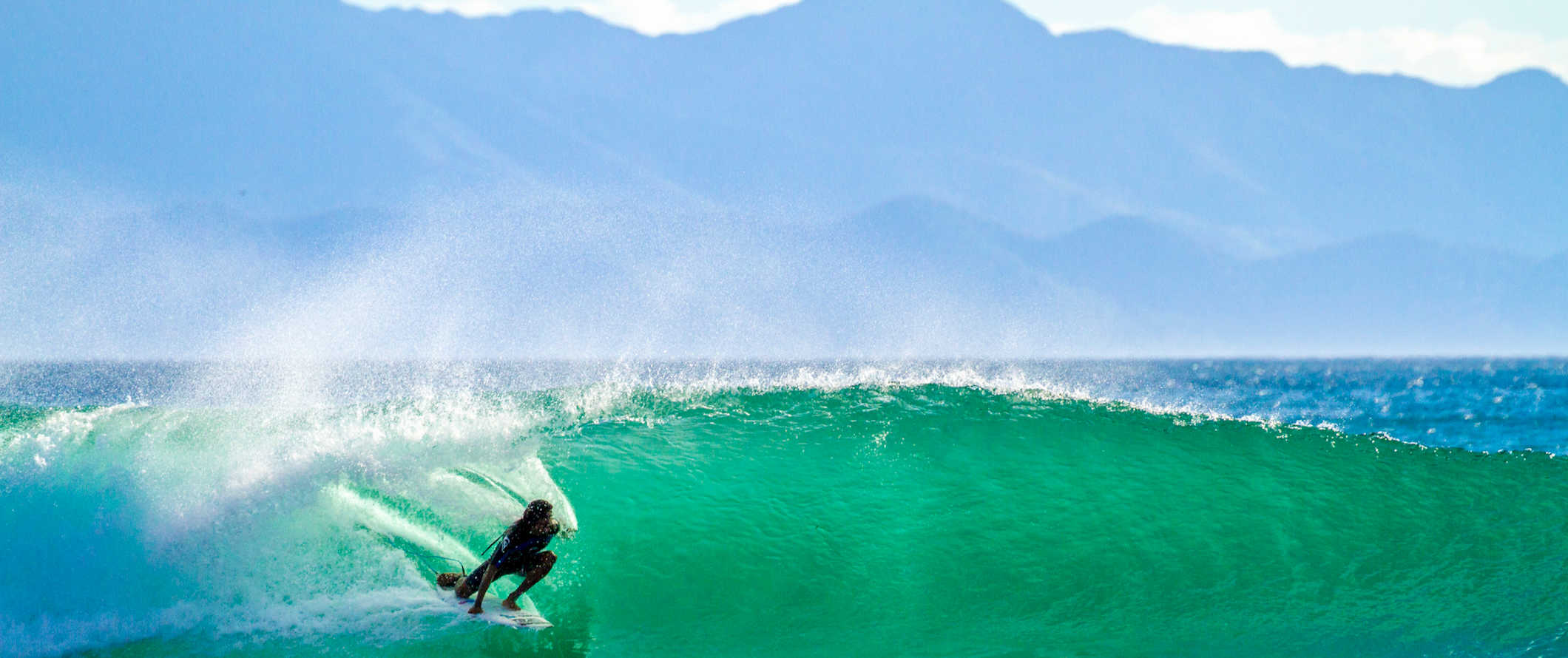
Bus – Chicken buses (i.e. converted school buses) are the cheapest way to get around. They are slow and stop often but have dirt cheap prices (around 35 NIO per hour of travel).
If you’re looking for a more comfortable journey, book with a coach company or private mini-shuttle, the latter of which are air-conditioned with cushioned seating and have storage room for your luggage.
For private mini-shuttles, expect to pay between 880-1,750 NIO per trip, however, you can try and buddy up with other hostel guests to drive down the price since it’s a private booking.
Most of the large cities have public transportation with local bus tickets costing under 6 NIO.
Air – La Costeña, Nicaragua’s domestic carrier, is based out of Managua and serves most of the country. Even if you’re keeping spending to a minimum, you have to take a flight if you want to visit the Corn Islands. Return tickets from Managua to the Corn Islands cost 5,700 NIO. For the 2.5-hour flight from Managua to Bluefields, expect to pay at least 4,500 NIO.
Train – There are no trains in Nicaragua.
Car Rental – A 4WD is recommended if you’re planning to visit rural areas as the roads here can be rough. Prices start from around 1,400 NIO per day for a multi-day rental. You’ll need an International Driving Permit (IDP) and you’ll definitely want to have extra insurance too.
When to Go to Nicaragua
There are two distinct seasons in Nicaragua: the dry season, which falls between November-April, and the green (rainy) season which is from May-October.
To avoid the crowds and peak prices, visit during the rainy season. The rainier months also offer ideal surfing conditions and deserted beaches to enjoy the waves. Just keep in mind the Caribbean coast sees more rain than the Pacific. Expect daily highs around 30°C (86°F).
The San Sebastian festival in Diriamba runs between January 17th-27th and is an amazing way to celebrate a local fiesta, with colorful parades, traditional music, and street-side buffets filling up every corner.
Easter (Semana Santa) is when you can find most locals hitting the mountains or beaches with family and friends. Buses and hotels, particularly on the coast, fill up fast so be sure to book in advance if you’re visiting during this time. Note that cities are much quieter during this period and many local businesses adapt their opening times/hours and events to celebrate the religious holiday.
How to Stay Safe in Nicaragua
Nicaragua is one of the safest countries in Central America, though petty theft and robberies are still relatively common. For that reason, keep your belongings secure and out of sight at all times — especially on crowded public transportation.
Solo female travelers should feel safe here when out during the day, however, they will want to avoid traveling alone after dark. Additionally, the usually standard precautions apply here as well (always keeping an eye on your drink at the bar, never walking home alone intoxicated, etc.).
If you rent a car, don’t leave any valuables in it overnight, and make sure to have suitable insurance just in case as break-ins can occur.
Scams are rare here, but they do happen. Be wary of random strangers asking for medicine or other financial assistance. Just politely decline and be on your way. You can read about common scams to avoid here .
Inflated tourist prices are common in Nicaragua. To avoid getting overcharged, learn some Spanish. Even just a few words and phrases can help you avoid being overcharged
Many people come to Nicaragua to party as drugs and alcohol are both cheap and abundant. However, the fines and penalties for drug use are steep. Police often expect bribes that can cost of hundreds — if not thousands — of dollars. Police won’t hesitate to strip search you if they suspect narcotics so avoid using drugs here to stay safe.
Moreover, the drug trade contributes to deaths, instability, and unrest in the region. Don’t contribute to that.
Protests and clashes in the major cities aren’t uncommon. Should a protest occur during your visit, avoid the area and return to your accommodation. While you’re unlikely to be hurt, it’s better to be safe than sorry.
As always, keep your wits about you at night time, particularly in the capital. Ask your hotel to call you a taxi in Managua (always negotiate the price before getting in the car), which can be an intimidating spot for travelers due to the lack of road names, tourists, and landmarks.
If you experience an emergency, dial 118 for assistance.
Always trust your gut instinct. Avoid isolated areas at night, and be aware of your surroundings at all times. Make copies of your personal documents, including your passport and ID, before you leave on your trip.
If you wouldn’t do it at home, don’t do it in Nicaragua!
The most important piece of advice I can offer is to purchase good travel insurance. Travel insurance protects you against illness, injury, theft, and cancellations. It’s comprehensive protection in case anything goes wrong. I never go on a trip without it as I’ve had to use it many times in the past.
Nicaragua Travel Guide: The Best Booking Resources
These are my favorite companies to use when I travel. They consistently have the best deals, offer world-class customer service and great value, and overall, are better than their competitors. They are the companies I use the most and are always the starting point in my search for travel deals.
- Skyscanner – Skyscanner is my favorite flight search engine. They search small websites and budget airlines that larger search sites tend to miss. They are hands down the number one place to start.
- Hostelworld – This is the best hostel accommodation site out there with the largest inventory, best search interface, and widest availability.
- Booking.com – The best all around booking site that constantly provides the cheapest and lowest rates. They have the widest selection of budget accommodation. In all my tests, they’ve always had the cheapest rates out of all the booking websites.
- Get Your Guide – Get Your Guide is a huge online marketplace for tours and excursions. They have tons of tour options available in cities all around the world, including everything from cooking classes, walking tours, street art lessons, and more!
- SafetyWing – Safety Wing offers convenient and affordable plans tailored to digital nomads and long-term travelers. They have cheap monthly plans, great customer service, and an easy-to-use claims process that makes it perfect for those on the road.
- LifeStraw – My go-to company for reusable water bottles with built-in filters so you can ensure your drinking water is always clean and safe.
- Unbound Merino – They make lightweight, durable, easy-to-clean travel clothing.
- Top Travel Credit Cards – Points are the best way to cut down travel expenses. Here’s my favorite point earning credit cards so you can get free travel!
Nicaragua Travel Guide: Related Articles
Want more info? Check out all the articles I’ve written on backpacking/traveling Central America and continue planning your trip:

Do You Need Travel Insurance for Costa Rica?

The Best Tour Companies in Costa Rica
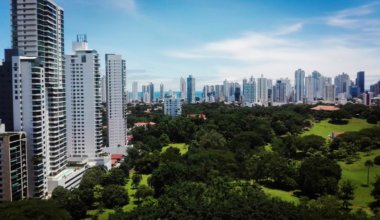
The 6 Best Hostels in Panama City, Panama

Is Belize Safe to Visit?

Is Central America Safe to Visit?
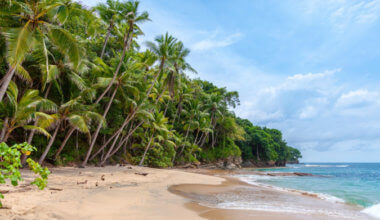
How to Get Around Central America on a Budget
Get my best stuff sent straight to you, pin it on pinterest.
- Where To Stay
- Transportation
- Booking Resources
- Related Blogs

Relocating Pets, Reuniting Hearts.
At World Pet Travel, we specialize in seamlessly relocating pets around the globe. Our team of dedicated pet travel experts works tirelessly to ensure that your furry companions experience a first-class journey, where safety and comfort are our top priorities. With travel agents spanning across numerous countries worldwide, there are few destinations we can’t reach.
Our caring travel experts handle all the details, from meeting import and export requirements to providing tender loving care to your cherished pets. Every member of our team collaborates to satisfy all necessary requirements prior to departure, ensuring a smooth transition for your entire family. With two decades of experience, our proficient and skilled team is well-equipped to handle your pet’s move, around the corner, or around the world.

Don’t you often wonder, why someone started a business? I have often asked myself that same question, especially when it is related to something I find interesting or never knew existed.I really never thought of starting my own company or that my love of animals would turn into my crusade.
My story started as a result of a pet move that went very bad very quickly two decades ago when moving my own family and personal pets to Costa Rica in Central America.Because I knew nothing about import rules of Costa Rica or how to get 3 dogs, 3 cats and 2 birds to my new home, my husband and I sought professional assistance from what we were told was a “reputable” company. Turns out they knew nothing more than I did about Costa Rica or how to get 3 dogs, 3 cats and 2 birds to Costa Rica. I later found out that my pets were the first they had moved to Central America, so in a sense, we were their guinea pigs.After this move was completed, with the help of many new friends in Costa Rica, we went to work to find a less stressful and controlled method of transport for all families with pets that we knew.
I knew there had to be a better way for families like mine with pets AND small children in tow to make an international move without all the stress and tears. That was my inspiration to start my own company and build a network to help others and their beloved pets.
It is also now my mission….“To provide the most outstanding pet transportation experience – Helping pet owners find a better way minimizing stress throughout the process.”
By Angela Passman Founder / President of World Pet Travel
Meet Our Team

Angela Passman
Founder / president.

Nathalie Martins
Pet travel consultant.

Jenna Fields

Tara Barbaglia

Director of Transportation

Brian Pagador

Veterinarian / Pet Relocation Coordinator

Dr. Tesecum

Giovanny Flores
Broker / pet relocation coordinator.

Ramiro Suarez
Full-stack developer.
Around the corner or around the world, World Pet Travel can relocate your pets to any location you want to go!

- El Salvador
- [email protected]
- @ Online contact form
- Other countries
- Door-to-Door Pet Relocation
- Pets traveling from Central America & Colombia
- Airport Pet Customs Clearance in Central America & Colombia
- Worldwide Pet Shipping
- Rabies test for Europe
- Rabies test form
- Our company
- Terms and conditions
- Testimonials
- US & Canada
- Int'l Calls & WhatsApp --> --> -->+507-66196964 -->
- Email [email protected]
- WhatsAptp Chat
- Contact Form
- FB Messenger
- WhatsApp Chat

Arrivals and departures
(mga) augusto c. sandino int’l airport.
ARRIVALS – PET CUSTOMS CLEARANCE SERVICES Service for pets arriving as unaccompanied baggage (CARGO) includes:
- Guidance by a pet relocation consultant about the documents that you will need to obtain in advance
- Answer questions about moving dogs and other pets to Nicaragua
- Expedited pet customs clearance after arrival
- Nationwide delivery

Departures - Taking or sending pets from Nicaragua
- Worldwide pet relocation
- Pet travel consultation
- Export permits
- Cargo booking and documentation
- Nationwide transportation prior to the international departure
- Boarding before departure (if required)
- Cargo weight and measurements
- Airport security screening
- Pets and crates professional preparation for travel
- Final cargo paperwork before departure
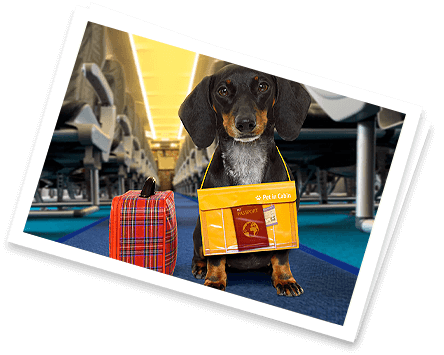
Why Choose Planet Pet Relocation?
- Vast experience relocating dogs, cats and other animals
- Knowledge of the import requirements to bring pets to Nicaragua
- Knowledge of the export requirements to ship pets from Nicaragua
- Work with most airlines
- Work with vets and local authorities in the pet travel arrangements
- Over 350 agents in more than 80 countries to assist in your pet move
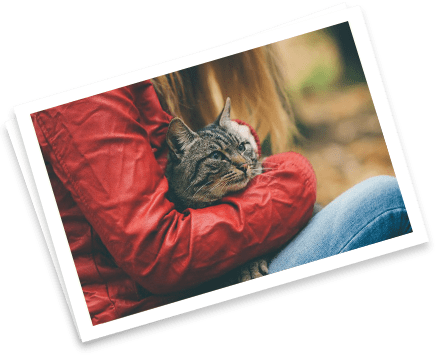
Thank you to Panama Pet Relocation and their wonderful staff for getting our Nicaragua rescue dog to us in the United States. They kept us posted on his wellbeing the entire trip and worked miracles to get him to us in a short time frame. Thank you.
- Michell Davis Nobach
Totalmente recomendado!! un 100 indiscutible!! Nuestra situación fue particularmente desafiante; sin embargo ellos trabajaron mucho hasta que encontraron la manera de ayudarnos al traslado de nuestros bebés de 4 patas. Para Panama Pet Relocation siempre la seguridad de nuestras mascotas fue prioridad, conocen perfectamente todo el proceso, se encargaron de las gestiones y durante el traslado se mantuvieron en comunicación con nosotros en todo momento. Siempre fueron accesibles, amables, atentos y cordiales. Gracias a Mario, Pao y todo el equipo !!!
- Eloisa Martinez

© Copyright 2024 Planet Pet Relocation All Rights Reserved
- Email: [email protected]
- Phones: (US & Canada) --> (Int'l Calls & WhatsApp) +507-66196964 (Int'l Calls & WhatsApp)
- Panama City, Panama.

Traveling with Pets
CDC is extending its temporary suspension of dog importation from high-risk dog rabies countries until July 31, 2024. This suspension includes dogs arriving from countries without high risk of rabies if the dogs have been in a high-risk country in the past 6 months. Learn about the current rules: What Your Dog Needs to Enter the United States
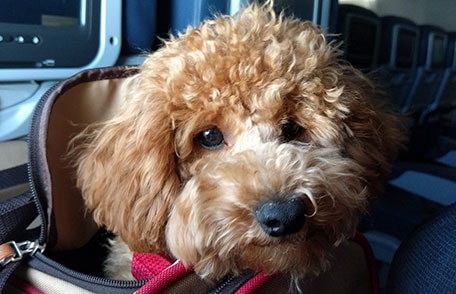
Photo Credit: Audilis Sanchez, CDC
Taking your dog or cat on a flight abroad? Make sure you have your pet’s documents when traveling internationally and returning home to the United States. Leave yourself plenty of time before the trip to take care of your pet’s required medical care and paperwork. Remember to start the process early.
First Stop—Your Vet’s Office
If you are traveling internationally, tell your veterinarian about your plans as soon as possible. Together, you can make sure your pet is healthy enough to travel and meets the requirements for your destination country and for your return to the United States. Requirements may include
- Blood tests
- Vaccinations
- Microchips for identification
- Health certificates
Airlines and countries often have different requirements, so make sure you know what the specific ones are.
Research How to Fly with Your Pet

Talk to your vet about your travel plans and your dog’s rabies vaccination. Photo credit: David Heaberlin, CDC
Give yourself plenty of time to do your homework before your trip. A great place to start is the Pet Travel website of the US Department of Agriculture’s Animal and Plant Health Inspection Service (APHIS).
Different airlines have different rules about whether and how a pet can travel. Depending on the airline, your pet may be able to travel on your flight either in the cabin or in the cargo hold. Confirm this ahead of time with your airline.
On airlines that allow pets to travel, only small dogs and cats that can fit in special carriers under the seat are allowed in the cabin. Their owners must care for them during any layovers. Some airlines may not allow them in the cabin and will transport them as cargo in a heated and ventilated hold. Cats and dogs may travel and rest better this way, since it is quieter and darker, according to the International Air Transport Association.
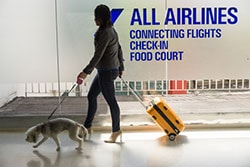
Research how to fly with your pet. Photo credit: Misty Ellis, CDC
Another way for your pet to travel is on a separate flight as an air cargo shipment. If this is your preference, or a requirement based on your dog’s size or the destination country’s rules, then get your pet used to the shipping kennel ahead of time. Make sure the door latches securely to avoid any mishaps in transit. Ask your veterinarian for advice about when to give food and water. If a pet is traveling as an air cargo shipment , you must make arrangements for pickup at the final destination.
Some US carriers don’t allow pets to be shipped between May and September, the hottest months for animals to travel in the Northern Hemisphere. No matter what time of year, safety is always a concern when pets travel by airplane. If absolutely necessary for a dog or cat to travel in cargo, it must be in a sturdy container with enough room to stand and sit, to turn around normally while standing, and to lie down in a natural position. For more information, visit the US Department of Agriculture pet travel website .
When waiting for a connecting flight, you may have to care for a pet traveling with you in the cabin, while the airline staff or ground handlers care for a pet traveling in cargo. Check with your airline(s) beforehand to see what is required.
Consider Your Pet’s Comfort
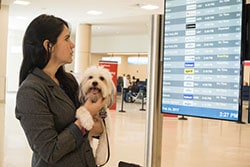
Consider your pet’s comfort when traveling. Photo credit: Misty Ellis, CDC
Loading and unloading can be the most stressful part of travel for animals. Consider these tips:
- Get your pet used to its carrier before the flight.
- Purchase flights with fewer connections or layovers.
- Pick departure and arrival times to avoid extreme heat or cold. For example, planning a nighttime arrival to a hot destination may be better for your pet.
- Consult with your veterinarian. The International Air Transport Association discourages the use of sedatives or tranquilizers because they could harm animals while in flight.
- Walk your pet before leaving home and again before checking in.
- If your pet is allowed in the cabin, check in as late as possible to reduce stress.
- If your pet will be transported as cargo, check in early so it can go to the quiet and dimly lit hold of the plane.
Cruise Ships and Travel by Sea
Different cruise ships have different rules about whether a pet or service animal can travel with you and what documents they require. Confirm this ahead of time with your cruise ship. If you travel with your pets internationally on a cruise ship or other maritime vessel, you will be required to meet federal entry requirements to enter or re-enter the United States with your pets. Note that CDC has temporarily suspended the importation of dogs arriving from countries that CDC considers high risk for dog rabies , including dogs that have visited a high-risk country in the past 6 months.
Requirements for Dogs Leaving the United States
CDC does not have requirements for dogs leaving the United States. However, if you plan to return to the United States with your dog, the dog will be required to meet the same entry requirements as dogs arriving from foreign countries (see below). If you plan to take your dog to a country at high risk for dog rabies , be sure to review the importation requirements before leaving the United States, because your dog may not be allowed to return to the United States due to the current temporary suspension , which applies to dogs that live in the United States and have traveled to high-risk countries, even if only for a short visit.
Visit the US Department of Agriculture website for pet entry requirements in foreign countries.
Requirements for Dogs Arriving in the United States
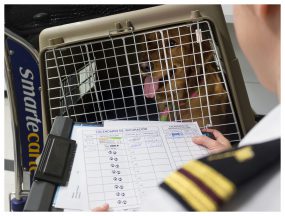
Meet the requirements for dogs entering the United States. Photo credit: Derek Sakris, CDC
Whether returning or coming to the United States, all dogs must appear healthy . There is a temporary suspension for dogs imported from countries that CDC considers high risk for dog rabies .
Some states may require vaccinations and health certificates. Check with your destination state’s health department before you leave on your trip.
Some airlines, cities, or states restrict certain breeds, so be sure to check before you travel.
The US Department of Agriculture has additional restrictions for some dogs arriving in the United States, such as working dogs and dogs intended for resale or adoption.
Requirements for Cats Arriving in the United States
Cats aren’t required by CDC to have a rabies vaccination certificate to enter the United States. However, most states and many other countries require them for cats, and CDC recommends that all cats be vaccinated against rabies. Be sure to check your destination’s requirements and ask your veterinarian before traveling.
Other kinds of pets
If your pet is not a cat or dog, there may be different requirements. Some animals , such as primates (monkeys and apes) or African rodents , won’t be allowed back into the United States. Even if they originally came from the United States, they can’t be brought back here as pets.
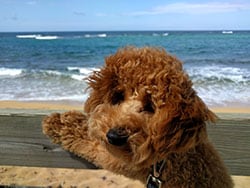
With careful planning, your pet can stay healthy and safe while traveling. Photo credit: Audilis Sanchez, CDC
Illness or Death of a Pet During Travel
Despite all precautions, pets sometimes get sick or even die on an airplane. Public health officials are required to make sure an animal didn’t die of a disease that can spread to people. They may have to do an animal autopsy or conduct other tests, at your cost, to figure out the cause of death. The animal’s remains often cannot be returned to you after this testing.
Think of Different Options
Make sure your pet is healthy enough to travel by air. If you have any doubts, consider leaving your pet with a trusted friend, family member, or boarding kennel during your trip, or taking another mode of transportation.
With careful planning, your pet will arrive both at its destination and return home healthy and safe.
- Information on Dog Importation for US Rescues, Shelters, and Adoption Agencies
- Information on Dog Importation for US Veterinary Clinics
- International Air Transport Association- Traveler’s Pet Corner
- Animal Transportation Association
- International Pet and Animal Transportation Association
- Centers for Disease Control and Prevention
- U.S. Department of Agriculture
- National Agricultural Library
- U.S. Fish & Wildlife Service
- U.S. Department of State
- U.S. Department of Transportation
- American Veterinary Medical Association
- CDC’s Healthy Pets, Healthy People website
- Travelers' Health
- Healthy Pets Healthy People
- Southern Border Health and Migration
- Port Health
- Division of Global Migration Health
To receive email updates about this page, enter your email address:
Exit Notification / Disclaimer Policy
- The Centers for Disease Control and Prevention (CDC) cannot attest to the accuracy of a non-federal website.
- Linking to a non-federal website does not constitute an endorsement by CDC or any of its employees of the sponsors or the information and products presented on the website.
- You will be subject to the destination website's privacy policy when you follow the link.
- CDC is not responsible for Section 508 compliance (accessibility) on other federal or private website.

IMAGES
VIDEO
COMMENTS
The date of departure from the United States. Whether the pet will be traveling alone, as cargo, or with a person in the cabin of the plane. Note: If you're traveling with a pet bird or exotic animal, you may need to work with additional agencies, such as the U.S. Fish and Wildlife Service (1.41 MB) and Centers for Disease Control and Prevention.
Complete the following entry requirements to travel to Nicaragua with your pet: Pets entering the country must have a valid health certificate from a licensed veterinarian accompanied by a valid rabies certificate that shows that your pet has been vaccinated from rabies no more than 365 days and no less than 30 days prior to travel. Airline ...
Any pet entering Nicaragua MUST have an import permit. This should be acquired BEFORE pet arrives in Nicaragua. This rule applies to ALL animals entering the country. In cabin, excess baggage or manifest cargo. Puppies and kittens under 3 months old are not required to have a rabies vaccine. Puppies and kittens must be a minimum of 10 weeks old ...
Nicaragua is pet friendly! If you need help to decide where to stay, play, or eat with Fido, you've come to the right place. Here's the scoop on our favorite pet friendly hotels, dog friendly activities, and restaurants that allow dogs in Nicaragua. Or, read about pet travel restrictions & quarantine information for Nicaragua in preparation for your trip.
Nicaragua Pet Passport includes step-by-step instructions, current info and forms to import your dog or cat to Nicaragua from any country without quarantine. ... Designed and custom-made exclusively for the Pet Travel Store. Clearance Price $19.95</ Now $19.95. Was $28.50 Add to Cart. Sale. Pet Passport & Medical Record ...
Yes, you can bring your dog to Nicaragua. However, you must comply with the country's pet import regulations. This includes having a valid rabies vaccination certificate and a health certificate issued by a licensed veterinarian from your home country. The health certificate should be issued within a certain time frame before travel ...
This will cost between $60-$80 USD depending on the driver. The buses will not allow you to bring a large dog on board (only very small ones that fit in carriers at your feet and must stay in carriers at all times). Hiring private drivers to get around gets expensive and you have to pay more for a larger car to fit the crate.
Regarding traveling with a dog - There are stray dogs running around everywhere in Nicaragua. Good chance of your dog getting in a fight, contracting something, or running away. Another thing to keep in mind is that pet kidnapping is not uncommon in Central America - especially when it is a Gringo who is obviously cares for the animal.
Traveling pets should be supervised closely and not allowed to come in contact with local animals. If you wake in a room with a bat, seek medical care immediately. ... For information traffic safety and road conditions in Nicaragua, see Travel and Transportation on US Department of State's country-specific information for Nicaragua. Hide.
World Pet Travel provides pet transportation solutions for families that are relocating around the corner or around the world with the best service. +1 214-396-5070 or text us at (469) 757-4364 [email protected]
Visit the COVID-19 crisis page on gov for the latest information regarding impacts to travel. Visit our Embassy webpage on COVID-19 for information on conditions in Nicaragua. ... Contact the S. Embassy in Managua, located at Km 5 ½ C. Sur Managua, Nicaragua, by calling +505-2252-7104, 7:15 a.m. to 4:30 p.m., Monday through Thursday, ...
3. Admire colonial Granada. Nicaragua's oldest city is revered as the colonial jewel of Central America. Many of the pastel-painted buildings have been meticulously restored. Bask in Granada's historic grandeur as you weave through the cobblestone streets, visit local art galleries, and sip on a coffee in a plaza. 4.
Note: If you're traveling with a pet bird or exotic animal, you may need to work with additional agencies, such as the U.S. Fish and Wildlife Service (1.41 MB) and Centers for Disease Control and Prevention. Read These Resources Pet Travel Guidance for Pets Traveling to Another Country From the United States
Tel: 202-485-8000 or 1-800-333-4636 and then press 5. Fax: (202) 663-3636. Note: The office suspended in-person counter service during the COVID-19 pandemic and is only offering mail-in service at this time. You should expect delays processing your request for authentication services.
Our dedicated pet travel experts will ensure a first-class journey with safety and comfort. We specialize in seamlessly relocating pets around the globe. +1 214-396-5070 or text us at (469) 757-4364 [email protected]
Knowledge of the import requirements to bring pets to Nicaragua; Knowledge of the export requirements to ship pets from Nicaragua; Work with most airlines; Work with vets and local authorities in the pet travel arrangements; Over 350 agents in more than 80 countries to assist in your pet move
Traveling with Pets. Print. CDC is extending its temporary suspension of dog importation from high-risk dog rabies countries until July 31, 2024. This suspension includes dogs arriving from countries without high risk of rabies if the dogs have been in a high-risk country in the past 6 months. Learn about the current rules: What Your Dog Needs ...
Find out if your pet qualifies to travel. Your animal doesn't qualify for pet travel and is subject to different import regulations and export regulations if you: Don't see your pet listed below. Are exporting semen or embryos from any animal. Have a pet that's considered livestock or poultry, like pigs or chickens.
The Centers for Disease Control and Prevention (CDC) has implemented a temporary suspension for dogs entering the United States, specifically those that do not have a current U.S. rabies vaccine and are returning from 113 high-risk rabies countries, as designated by the CDC. Check the summary of most recent changes.
If you have questions about CDC requirements, contact CDC-INFO or call them at 404-718-3660. This page will guide you through the requirements for bringing privately owned, pet dogs into the United States from another country, including U.S. returning dogs. If you're bringing dogs into the United States for commercial sale or adoption ...